Media | Articles
A Rat’s Life: Chevy big-block V-8s thrived for over half a century
Don Sherman’s latest entry in our Epic Engines series honors one of America’s best-loved powerplants. For deep dives on the small-block Chevy, Jaguar straight-six, Cadillac V-16, Chrysler Hemi V-8, read more here. -EW
After Chevrolet’s beloved small-block of 1955 earned its Mouse Motor alias, it was inevitable that its younger, larger brother would be called the Rat, if only to distinguish these two Chevy V-8s. Knowing there’s nothing rodent-like about either engine, enthusiasts took these pet names in stride.
In 1958, still celebrating postwar prosperity with ever larger cars, Chevy dumped the dowdy 150 and 210 model names of 1957 and jazzed them up as the Delray and the Biscayne, adding the Impala sport coupe as a sub-model of the top-of-the-line Bel Air. There were 10 separate body styles, with the Blue Flame six as the base engine and a 283 small-block V-8 teamed as the power upgrade, plus an all-new 348-cube V-8 that GM called its W engine, created to empower Chevy’s ambitious longer, lower, wider stratagem.
When engineers working under the direction of their hard-charging leader, Ed Cole, first fleshed out the small-block V-8’s specs in 1952, they deliberately left room in the block to grow. Given the bore spacing and the amount of cooling capacity in the block, the original 265 was thought to be capable of expanding to 302 cubic inches over what was expected to be the engine’s 10-year production run. In hindsight, it’s a quaint notion given that the basic design is still in production nearly 70 years later and its factory displacement peaked at 428 cubic inches in the 2006 LS7, the stroke stretched beyond Cole’s wildest imagination and the bores so enlarged there was no space for coolant flow between them.
However, back in the mid-’50s, it was believed that a whole new engine would be needed for the larger and more powerful cars that Chevy was planning. America was on top, gas was cheap, and a transnational freeway system was under construction that could whisk a fast car across multiple state lines in a matter of hours. Buyers wanted horsepower, and Chevy’s answer for 1958 was the W—which could have stood for weird, considering this engine’s departures from convention.
Marketplace
Buy and sell classics with confidence
Among its oddities were completely flat-bottomed cylinder heads, the combustion “chambers” not scallops in the head but rather just the void between the head and the piston top. Obviously, this was easier to manufacture as the heads required less casting and machining work, but it was also thought to aid power.
The odd chamber arrangement was achieved by planing the block deck differently from conventional engines. Normally, the deck—the top of the cylinders where the engine block meets the head—is perpendicular, or 90 degrees, to the direction of piston travel. For the W, Chevy tilted the block decks in the design, slanting them inward toward the engine’s centerline. The W’s block casting had decks inclined 74 degrees to piston travel rather than 90, creating a 16-degree “wedge” shape for the void between the piston and the head that served as the combustion chamber.
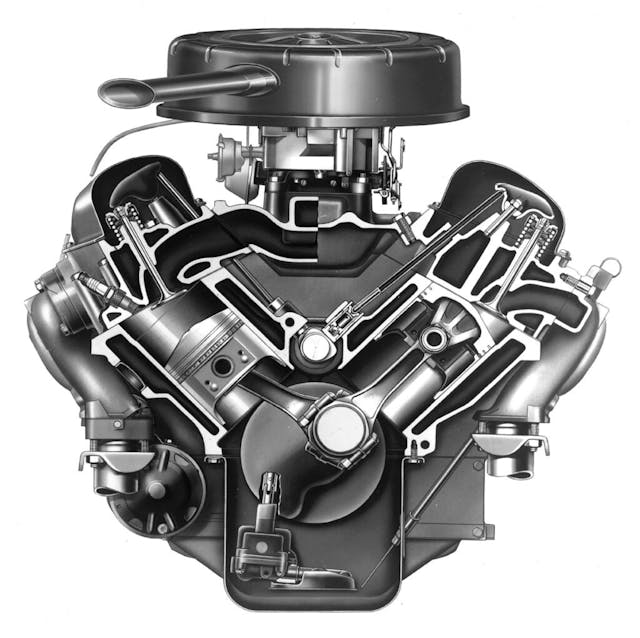
The second oddity of the W was that the outboard edges of the heads were cut away to permit nestling the spark plugs as close as possible to the bore centers for quick, complete combustion. The W engine’s pistons also had V-shaped crowns. As a piston stroked upward on compression, the fuel-air mixture was squished across the cylinder toward the spark plug. This stirring effect enhanced fuel-air mixing upon ignition and accelerated flame motion throughout the wedge-shaped chamber. Invigorating combustion in this manner raised power and torque, improved fuel economy, and also smoothed the idle.
Such engineering tricks were necessary in an age before widespread fuel injection, and before modern tools were developed such as computer simulation of combustion flow, which today allows engineers to better understand what happens to fuel and air in the milliseconds before and after ignition. Pent-roof pistons and wedge-shaped combustion chambers are today rustic relics of an earlier era of engine development.
As was Cole’s philosophy with the small-block, the W’s cylinder bores were spaced 4.84 inches apart (versus 4.40 inches for the small-block) to give this engine ample piston displacement and room for growth. Starting with a bore of 4.125 inches and a stroke of 3.25 inches, for 348 cubic inches, the big-block would grow through the years, eventually topping out at 632 cubic inches.
We say 348, but the 1958 birth displacement was actually 347.47 cubic inches. Chevy rounded up because Pontiac already had a different 347 V-8. The use of cast iron for the heads and block yielded a base engine weight of 685 pounds in 1958 (versus 550 pounds for the small-block) but subsequent aluminum dieting dropped the big-block’s assembled mass below 600 pounds.

Stamped-steel rocker arms pivoting on balls attached to the head via screwed-in studs were similar to the small-block’s cost-saving innovations. But the small-block’s valves were arrayed in neat, straight lines, whereas the big-block’s valves zigzagged the length of the head to shorten the intake and exhaust ports for better breathing. The tubular pushrods carrying pressurized lubricating oil from the lifters to the rocker arms and valve stems were also inherited from the small-block.
Chevy’s new Turbo-Thrust 348 V-8 was rated at 250 horsepower when equipped with a four-barrel carburetor, and 280 horsepower in Super Turbo-Thrust form (with no turbo in sight but three two-barrel carbs on top). A high-compression, solid-lifter version was rated at 315. It should be noted that stated output ratings were gross figures, meaning without all the equipment necessary to run and plumb the engine. They were thus somewhat inflated until standardized—and more realistic—net industry measurements arrived in 1972. By 1961, the top 348 used a hotter solid-lifter camshaft to produce 350 horses. Chevy also offered a 409-cubic-inch, bored and stroked version for the 1961 Impala SS, with a forged-steel crankshaft, twin four-barrel carbs, and a 409-hp rating, prompting The Beach Boys to extol the virtues of Detroit’s hottest street racer. In 1965, this engine topped out at 425 advertised horses thanks to higher compression and more aggressive valve timing.

Drag and oval racers fared better. Chevy’s gift to them was the Regular Production Option (though not actually that regular) Z11, consisting of a 427-cubic-inch V-8 with cowl induction (for cooler, denser air), a two-piece intake manifold with two four-barrel carburetors, 13.5:1 compression, and a few aluminum body parts. An alleged 50 such cars were built, plus a few spare engines sold over the parts counter. Z11 Chevys are all but priceless today.

To transition to the second generation of its big-block V-8, Chevrolet supplied southern racers with what is now known as the Mark II Mystery Motor, not because GM had a ban on racing, but because Chevy was striving to hide its latest technology from the competition. Here, the weird block and head design had evolved into a more conventional arrangement. The side edges of the cylinder heads were straightened to accommodate spark plugs angled toward the bore centers. The displacement was limited to 427 cubic inches, to comply with NHRA and NASCAR rules. Combining a 4.312-inch bore dimension from the 409 with a stroke lengthened to 3.65 inches yielded just under 427 cubic inches. For enhanced breathing, all valves were angled toward the center of the bore, a configuration soon nicknamed “porcupine.” Four-bolt main bearing supports were added to improve durability.
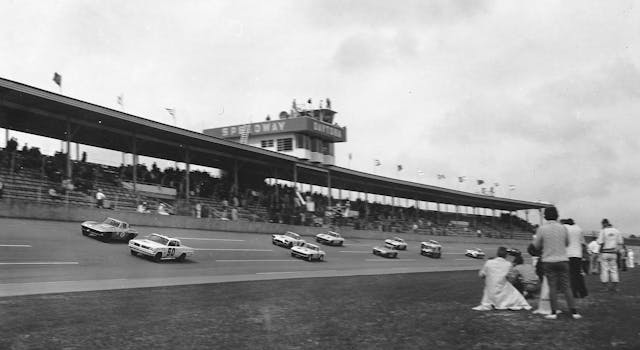
Billy Krause earned a third-place finish at the 1963 Daytona 24-hour race driving a Corvette with the Mark II V-8 prepared by Mickey Thompson. The following week, five Chevy Impalas powered by this engine qualified for NASCAR’s Daytona 500. Due to reliability issues, the best finish was Johnny Rutherford’s ninth overall.
When an attempt to recycle a Packard V-8 for Chevy’s use failed, GM skipped the Mark III designation to launch its Mark IV big-block in 1965. Porcupine heads and four-bolt mains made the leap from the Mark II V-8. The dry weight went up 10 or so pounds, in part due to meatier main-bearing bulkheads.
The Mark IVs for 1965 Corvettes and Chevelles displaced 396 cubic inches and produced 375 horsepower with 415 lb-ft of torque. With solid lifters, gross output leaped to 425 horsepower. A slightly larger bore yielded 402 cubic inches, though Chevrolet stuck by the 396 label to avoid marketplace confusion. Camaros, Novas, Monte Carlos, full-size Chevys, and pickups all thrived with these engines equipped with a variety of compression ratios and carburetors to deliver 265–375 horsepower.
Marching smartly along, a 427 big-block debuted in 1966 for Corvettes and full-size Chevys at the height of the muscle car wars. During the next five model years, this Mark IV flexed major muscles in a variety of carburetion, camshaft, and compression-ratio configurations to deliver up to 435 horsepower.
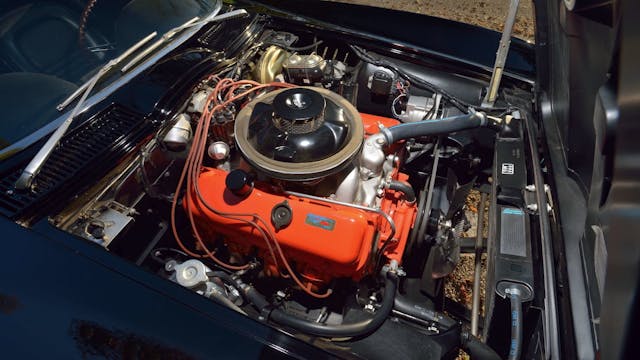
To honor GM’s ban on direct motorsports participation, resourceful engineers crafted special parts on the sly, quietly slipping them to worthy racers. To enhance the 427 Mark IV’s performance, a special L88 package was developed that offered new aluminum cylinder heads saving 75 pounds and a long list of support parts, including a four-bolt main bearing block carrying a forged crankshaft, forged pistons tied to shot-peened connecting rods, triple valve springs, an aluminum intake manifold topped with a monster Holley carburetor, and an aluminum water pump. Roger Penske campaigned a 1966 Corvette powered by an L88 engine in the 24 Hours of Daytona; in spite of a heavy crash, he won his class and finished 12th overall. The following year at Le Mans, an L88 Corvette topped 170 mph on the Mulsanne Straight before dropping out with a broken crankshaft.
Ex-racer Zora Arkus-Duntov, the Corvette’s patron saint, then released what was billed as an “off-road” engine for Corvettes. Only 216 were sold in the 1967–69 model years and survivors are the most valuable Corvettes money can buy. One brought $3.85 million at a 2014 Barrett-Jackson auction. Mandatory equipment included transistor ignition, heavy-duty suspension and brakes, and a limited-slip differential. To discourage road use, heater and defroster equipment were not included. The L88’s 430-hp rating was creatively 5 horses fewer than the mainstream 427 engine equipped with three two-barrel carburetors.
In support of the Can-Am competition raging at this time, GM collaborated with Reynolds Aluminum to convert the big-block V-8 to a cast-aluminum design with iron liners fitted for durability. This move yielded an assembled weight of approximately 575 pounds, only a few more than an iron small-block. To prove this ZL1 V-8 was a production configuration, two Corvettes and 69 Camaros rolled down 1969 model year assembly lines with them. At $4718.35, the ZL1 option nearly doubled the price of a Corvette. Advertised output was a grossly understated 430 horsepower. Independent testers found that adding headers upped that figure by nearly 100.

In response to ever-tightening emissions regulations, Ford and Chrysler both pulled the plugs on their NASCAR programs and their big high-performance V-8s in 1970, leaving GM as the sole maker of a NASCAR-worthy engine. Stretching the stroke to an even 4 inches for 1970 yielded (an honest) 454 cubic inches. This big-block delivered a meaty 500 lb-ft of torque in full-size Chevys, Chevelles, Monte Carlos, El Caminos, Corvettes, and GMC Sprints. The top power rating was 450 horsepower at 5600 rpm with a single four-barrel Holley carburetor. When net output ratings and lead-free gasoline arrived in 1972, the same 454 Corvette V-8 topped out at a meager-sounding 270 horsepower. Three years later, yielding to regulations and oil crises, big-blocks were broomed from the Corvette’s options list.
Updates included with the 1991 Gen V big-block were four-bolt main bearing caps, a single-piece rear crankshaft seal, and attractive cast-aluminum valve covers. Provisions for a cam-driven fuel pump and valve-lash adjustment were deleted. The 454 version continued on for five more years, christened Vortec 7400 in 1996 in celebration of GM’s discovery of the metric system.
A 502 big-block also popped up in GM’s 1991 Performance Parts catalog. These crate engines, offering up to 600 horsepower for street and marine use, included throttle-body fuel injection and the electronic equipment needed to control it. A 572 version provided 620–720 horsepower depending on the compression ratio selected.
In 1996, a new sixth-generation Vortec 7400 displacing 454 cubic inches arrived exclusively for truck use. Its claims to fame included roller hydraulic lifters and multi-port electronic fuel injection yielding up to 290 horsepower.
Acknowledging there was more where that engine came from, GM replaced the 7400 with its Gen VII Vortec 8100 in 2001. In addition to a longer 4.37-inch stroke, this big-block boasted a revised firing order to improve smoothness, longer connecting rods, and metric fasteners throughout. In 2009, the last Gen VII big-block left GM’s Tonawanda, New York, engine plant, which currently manufactures the Corvette’s LT2 small-block V-8.
Suggesting that Chevy’s big-block may survive to consume the very last drop of petroleum, the performance aftermarket still holds this V-8 dear. Complete engines can be assembled devoid of GM components, and aluminum blocks and heads are readily available. GM recently set its best and brightest experts to work designing a fresh edition to be sold as a crate engine. The result revealed at last year’s SEMA Show is the ZZ632 10.4-liter V-8 that delivers a stunning 1004 horsepower at 6600 rpm and 876 lb-ft of torque at 5600 rpm on 93-octane gasoline. The price: $37,758.
Electrification will eventually send the Chevy big-block and fellow CO2-spewing engines to the boneyard. But until then, the Rat in all its many forms will be revered as a superb means of converting gasoline and air into pure speed.
This article first appeared in Hagerty Drivers Club magazine. Click here to subscribe and join the club.
Check out the Hagerty Media homepage so you don’t miss a single story, or better yet, bookmark it.



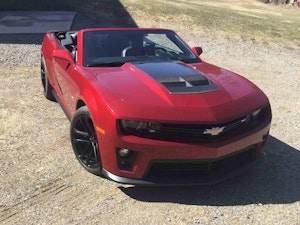










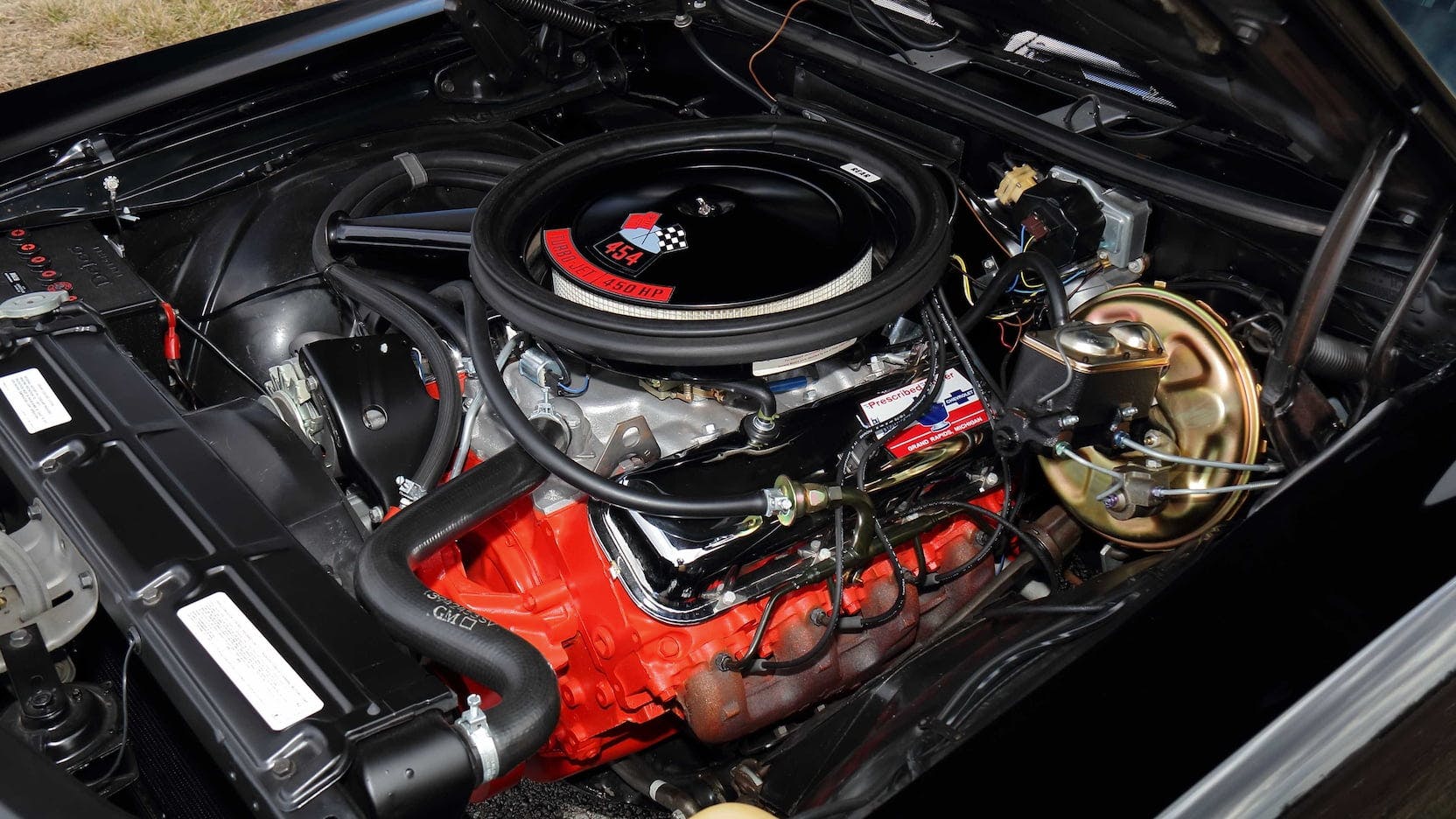
My name is Jimmy just recently purchased the big block 500 and a th400 transmission and donor body to drop it in working on a new build for the track and racing scene here in Florida I just spent most of my saved up money getting the motor transmission and the truck to put it in wanted to reach out and see if you would be interested in sponsoring some of your parts for the build and advertise your logo for your company on the truck planned on having more money to dump into it fortunately the week ago everything got burned up and had to find some place to go lost just about everything we had inside but the motor is okay LOL if you’re interested in advertising Your Parts here in Florida I would love to give you all a shout out for your parts here in Florida I race on the street in the tracks when we can and they shut down our track here in Green Cove Springs what the street racing is pretty good will you travel all the way almost to Georgia for different car meets we had Pritchard Beach Boulevard Atlantic Gainesville few other places here in it between was looking through for different builds for the motor and come across your ads if you are interested in sponsoring any part that y’all would like to put out there would greatly be appreciated and help and I would love to put your name out there as well if you’re interested just contact me 561-253-5642 the truck this motor and the transmission and is about all we have left and I got to get it going to be able to make some more money crazy how one bad day can take everything if y’all have anything return parts that are salvageable used parts that will fit it anything I literally have nothing to put everything I had to get this motor a transmission in the truck to try to start getting fixed up to be able to make money again greatly appreciated more than words can say mailing address is P.O. Box 1831 Green Cove Springs Florida 32043 I don’t have a physical address anymore technically I’m homeless I guess you’d say fire took everything and I’m in a tent until I can get this project done and get money coming in again it’s the best I can do thank you have a blessed Christmas and a Happy New Years PS I know it’s a send to be putting this in a Ford Ranger was literally the only choice I had wish I could put it in my dream car 69 Camaro or even at least another box Chevy but I can’t afford it right now originally just got the ranger because it had Ford 9-inch rear end I need it and everything happened and ended up broke and starting over again so just don’t judge me LOL beautiful piece of History will find this rightful home in a Chevrolet soon as I get back up again I promise you that
“Electrification will eventually send the Chevy big-block and fellow CO2-spewing engines to the boneyard.”
Don’t be so sure and ease up on the EV propaganda. EVs aren’t being driven by broad based consumer demand. It is being driven by a fascist force feeding of the EV platform to consumers and manufacturers. If EVs made sense the govt wouldn’t have to force or bribe manufacturers and citizens to adopt them.
Great analysis. EV’s will have a limited role in the future.
The “W” engines and the Mk. IVs are substantially the same below the deck, and “W” engine cranks will even fit Mk.IV blocks with spacer bearings.
No, electric cars are not the future. Hydrogen will likely be the answer far down the road. Gasoline is here to stay for many years to come.
Another vote for more info regarding GM considering use of a Packard engine…
Wasn’t the “Mouse Motor” originally nicknamed the “Mighty Mouse”? Leading naturally to its larger brother being referred to as the “Rat”?
Anyway, great article!